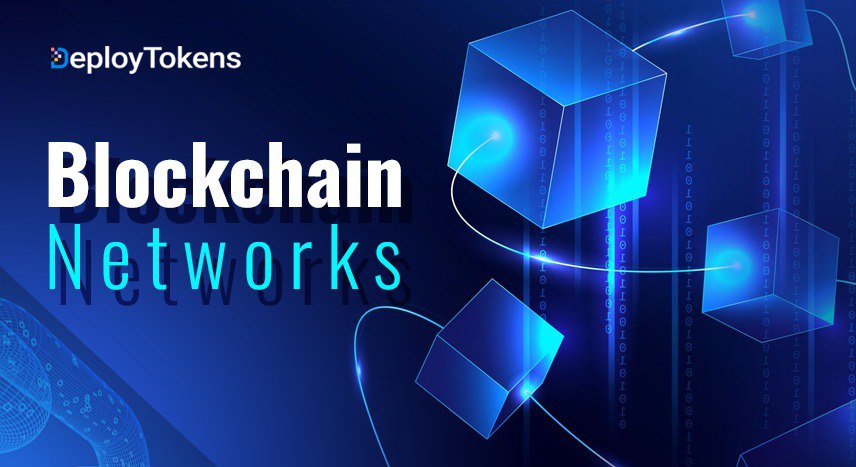Picture a ledger that’s not locked in a bank vault or a single server but shared across thousands of computers worldwide, unchangeable and open for all to see. That’s the essence of a blockchain network—a revolutionary system driving cryptocurrencies, digital assets, and even visions like the metaverse. If you’ve ever wondered what makes this technology tick or how it’s transforming our world, you’re in the right place. Let’s unpack blockchain networks step-by-step, no jargon overload, just clear answers.
What Exactly Is a Blockchain Network?
A blockchain network is a decentralized digital record-keeping system. Instead of one central authority—like a bank or government—holding all the data, it’s spread across a network of computers called nodes. Each node has a full copy of the ledger, which is made up of “blocks” of data linked together in a chain. Think of it as a tamper-proof diary: once something’s written, it’s locked in, and everyone can verify it.
This setup powers everything from Bitcoin to newer platforms like Ethereum and beyond. It’s why you can send crypto without a middleman or explore projects like Soneium Token, a blockchain designed for speed and scalability. Unlike traditional systems prone to hacks or outages, blockchain’s distributed nature makes it resilient and trustworthy—key reasons it’s catching fire across industries.
How Do Blockchain Networks Actually Work?
Let’s break it down into a process you can picture:
- A Transaction Starts It All
Someone initiates an action—maybe sending cryptocurrency, creating a utility token, or logging a property transfer. This is the “transaction,” the spark that sets things in motion. For example, platforms like DeployTokens let you create tokens on networks like Ethereum or BNB Chain with ease—no coding required. - Nodes Step In to Validate
The transaction doesn’t just happen—it’s checked by the network’s nodes. These computers use a consensus mechanism to agree it’s legit. Two big ones are Proof of Stake, where validators stake their own crypto to confirm transactions, and Proof of Work, where they solve complex puzzles. Both ensure no funny business, like double-spending, slips through. - Blocks Take Shape
Once verified, the transaction joins others in a block—think of it as a page in that shared diary. Each block gets a unique code, called a hash, that ties it to the previous block. This chaining is what makes blockchain secure: mess with one block, and the hashes won’t line up anymore. - The Chain Grows Stronger
The new block is added to the chain, and every node updates its copy of the ledger. This happens fast—on networks like Polygon or Arbitrum, it’s near-instant. The result? A growing, synchronized record that’s the same everywhere. - Locked and Loaded
Once a block’s in, it’s permanent. No erasing, no rewriting—just a transparent history. That’s why blockchain’s called immutable. Whether it’s a payment or a tokenized asset, it’s there for good, auditable by anyone.
This process runs on networks big and small—Ethereum for smart contracts, Avalanche for speed, or even experimental ones like Sonic. It’s the same tech whether you’re tracking trades on DEXTools or dodging scams with Rugcheck.
What Makes Blockchain Networks Special?
So why all the hype? Here’s what sets them apart:
- Decentralization: No single point of failure. If a bank’s server crashes, your money’s stuck. Blockchain keeps going, no matter what.
- Ironclad Security: Cryptography locks it down. Hashes and consensus make tampering a fool’s errand—perfect for things like security tokens.
- Total Transparency: Every transaction’s public. You can see it live on explorers or tools like DEXscreener, no secrets allowed.
- Endless Possibilities: From meme coins on Pump.fun to real-world asset tokenization, blockchain bends to fit any idea.
Take Ethereum, for instance. It’s not just crypto—it’s a platform for ERC-20 tokens, powering everything from DeFi projects to digital collectibles. Or look at BNB Chain, optimized for fast, cheap transactions. Each network tweaks the formula, but the core stays solid.
Where Blockchain Networks Shine in Real Life
This isn’t theoretical—it’s happening now:
- Cryptocurrency: Bitcoin kicked it off, but networks like PulseChain and zkSync keep pushing the boundaries.
- Finance: Decentralized finance (DeFi) thrives here, with liquidity pools letting you earn passively.
- Digital Assets: Tokenize art, property, or even a meme coin on Base—the options are wild.
- Trust: Tools like Rugcheck help you spot crypto rug pulls before they sting.
Look at token creation: with DeployTokens, you can launch a BEP-20 token on BNB Chain or an ERC-20 on Ethereum in minutes. It’s blockchain’s flexibility in action, democratizing tech for everyone.
The Challenges Blockchain Faces
It’s not perfect. Early blockchains like Bitcoin guzzle energy—Proof of Work’s a power hog. Scalability’s another hurdle: too many users, and things slow down. But newer networks like Optimism and Mantle are fixing that with clever upgrades, cutting costs and boosting speed. The tech’s evolving fast—think of it as blockchain 2.0.
Why Should You Care?
Blockchain networks aren’t just for coders or crypto bros—they’re rewriting how we trust and trade. Imagine owning a piece of digital real estate, verified on-chain, or launching your own token without a tech team. It’s already possible. The future of tokenization could unlock financial freedom, blending blockchain with AI for even bigger leaps.
Ready to Explore Blockchain Networks?
Jump in! Start small—check out DeployTokens to create a token on networks like Core or Blast. Dig into our documentation for the nitty-gritty, or follow us on Telegram for updates. Blockchain’s not a buzzword—it’s a tool, and it’s yours to use. What will you build with it?
